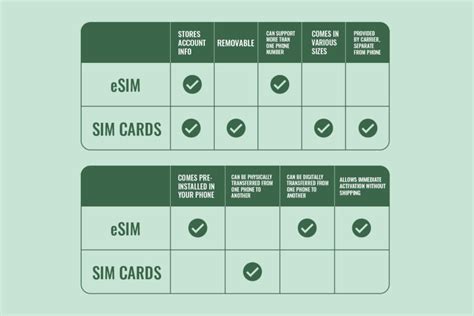eSIM vs. Physical SIM: Activation Time Compared
Choosing between an eSIM and a physical SIM card often comes down to convenience and speed. While both offer cellular connectivity, their activation processes differ significantly, impacting the time it takes to get online. This article compares the activation times of eSIMs and physical SIMs, exploring the factors influencing this process and helping you decide which option best suits your needs.
What is an eSIM?
An eSIM, or embedded SIM, is a digital SIM card integrated directly into your device's hardware. Unlike a physical SIM, it doesn't require a physical swap. This eliminates the need to handle tiny cards and allows for quicker profile switching, a feature particularly appealing for frequent travelers.
What is a Physical SIM?
A physical SIM is the traditional SIM card – a small, removable chip that you insert into your device's SIM tray. It requires physical handling and often involves visiting a carrier store or waiting for delivery if ordering online.
eSIM Activation Time: How Long Does it Take?
eSIM activation times are generally much faster than physical SIMs. The exact time depends on several factors:
- Carrier Network: Some carriers have streamlined eSIM activation processes, resulting in near-instantaneous activation. Others may require a few minutes to verify your details and activate your profile.
- Device Compatibility: Ensure your device is fully compatible with eSIM technology. Incompatible devices will obviously not activate an eSIM profile.
- Network Coverage: While less common, occasional network congestion could slightly delay eSIM activation.
- Your Account Information: Accurate and readily available account information speeds up the process.
In many cases, eSIM activation can be completed in under 5 minutes, sometimes even instantly, provided everything is in order. You typically receive a QR code from your carrier which you scan with your device's camera, and the activation is handled automatically.
How to Speed Up eSIM Activation:
- Ensure accurate account details: Double-check your name, address, and account number before starting the activation process.
- Have a stable internet connection: A strong Wi-Fi or cellular connection is crucial for downloading the eSIM profile.
- Use the carrier's official app: Using the carrier's app usually provides the easiest and most efficient method.
- Follow instructions carefully: Pay close attention to all instructions provided by your carrier.
Physical SIM Activation Time: How Long Does it Take?
Physical SIM activation times vary considerably more than eSIMs, depending on several factors:
- Order Method: Ordering a SIM online may involve shipping times, adding several days to the activation process. In-store activation is usually much faster.
- Carrier Network: Similar to eSIM activation, the carrier's internal processes influence activation speed.
- Network Congestion: Especially during peak times, there might be delays in processing your SIM activation.
- Verification Procedures: Carriers sometimes require additional verification steps, slowing down the process.
Activation of a physical SIM card can take anywhere from a few minutes (in-store) to several days (online order and shipping).
How to Speed Up Physical SIM Activation:
- Activate in-store: For immediate activation, visit a carrier store.
- Order online early: Allow sufficient shipping time if ordering online.
- Provide accurate information: Ensure your information is completely accurate to prevent delays.
- Check your order status: Track the order regularly to know the estimated delivery and activation timeframe.
Which is Faster: eSIM or Physical SIM?
eSIM activation is significantly faster than physical SIM activation. While physical SIM activation can sometimes be rapid (in-store purchases), the potential for shipping delays and more complex verification procedures usually make eSIMs the quicker option.
What are the Advantages and Disadvantages of each?
| Feature | eSIM | Physical SIM |
|---|---|---|
| Activation Time | Typically much faster (minutes) | Can vary greatly (minutes to days) |
| Convenience | More convenient, no physical card required | Requires physical handling and swapping |
| Multiple Numbers | Can easily support multiple profiles | Usually supports only one number at a time |
| Loss/Damage | Less susceptible to loss or damage | Can be easily lost or damaged |
| Device Support | Limited device compatibility | Wider device compatibility |
Conclusion:
For speed and convenience, eSIMs offer a clear advantage in activation time. However, the choice also depends on factors like device compatibility and your preference for physical versus digital management of your mobile connectivity. Weighing the pros and cons based on your individual needs will guide you to the best option.

